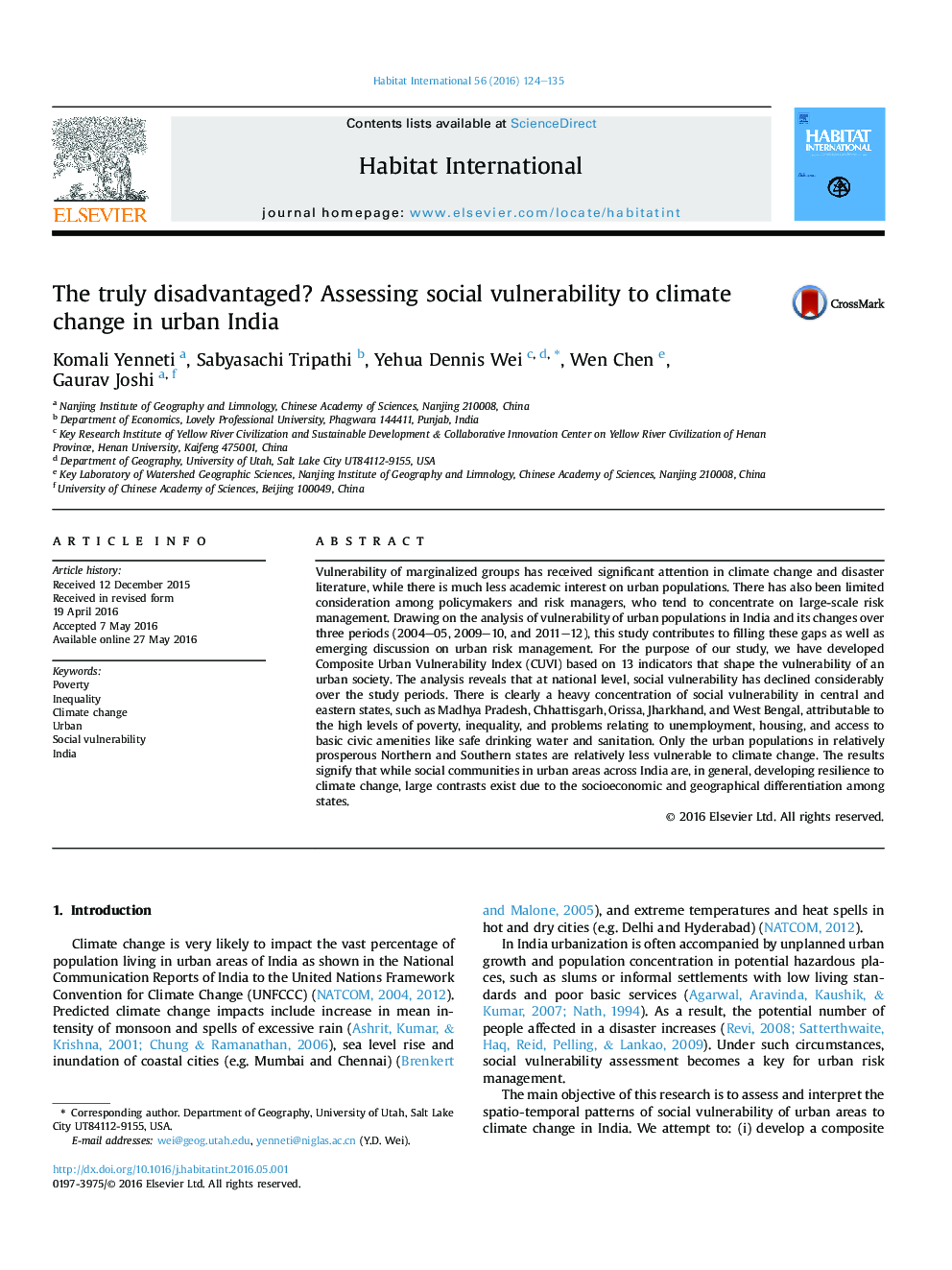| کد مقاله | کد نشریه | سال انتشار | مقاله انگلیسی | نسخه تمام متن |
|---|---|---|---|---|
| 1047703 | 1484488 | 2016 | 12 صفحه PDF | دانلود رایگان |
• This study identifies and maps the spatial-temporal patterns of social vulnerability of urban areas in India.
• The analysis reveals that social vulnerability has declined considerably at national level.
• There is clearly a heavy concentration of social vulnerability in central and eastern states.
• Urban populations in Northern and Southern states are relatively less vulnerable.
• Social vulnerability varies among states due to differentiated socioeconomic and geographical conditions.
Vulnerability of marginalized groups has received significant attention in climate change and disaster literature, while there is much less academic interest on urban populations. There has also been limited consideration among policymakers and risk managers, who tend to concentrate on large-scale risk management. Drawing on the analysis of vulnerability of urban populations in India and its changes over three periods (2004–05, 2009–10, and 2011–12), this study contributes to filling these gaps as well as emerging discussion on urban risk management. For the purpose of our study, we have developed Composite Urban Vulnerability Index (CUVI) based on 13 indicators that shape the vulnerability of an urban society. The analysis reveals that at national level, social vulnerability has declined considerably over the study periods. There is clearly a heavy concentration of social vulnerability in central and eastern states, such as Madhya Pradesh, Chhattisgarh, Orissa, Jharkhand, and West Bengal, attributable to the high levels of poverty, inequality, and problems relating to unemployment, housing, and access to basic civic amenities like safe drinking water and sanitation. Only the urban populations in relatively prosperous Northern and Southern states are relatively less vulnerable to climate change. The results signify that while social communities in urban areas across India are, in general, developing resilience to climate change, large contrasts exist due to the socioeconomic and geographical differentiation among states.
Journal: Habitat International - Volume 56, August 2016, Pages 124–135
